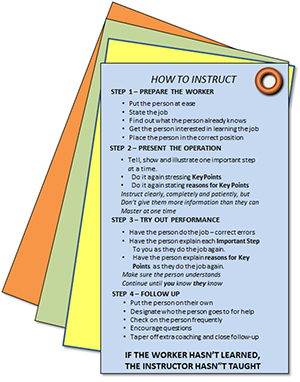Training Within Industry (TWI) job instruction is built around a four-step process titled “How to Instruct.”
|
ADVERTISEMENT |
Steps two and three are the core of the process:
• Present the operation
• Try out performance
I want to discuss step three: Try out performance
Teaching back as learning
All too often I see “training” that looks like this:
• Bring the team members into a room.
• Read through the new procedure—or maybe even show some PowerPoints of the procedure.
• Have them sign something that says they acknowledge they have been “trained.”
 Training Within Industry (TWI) pocket card |
This places the burden of understanding upon the listener.
…

Add new comment